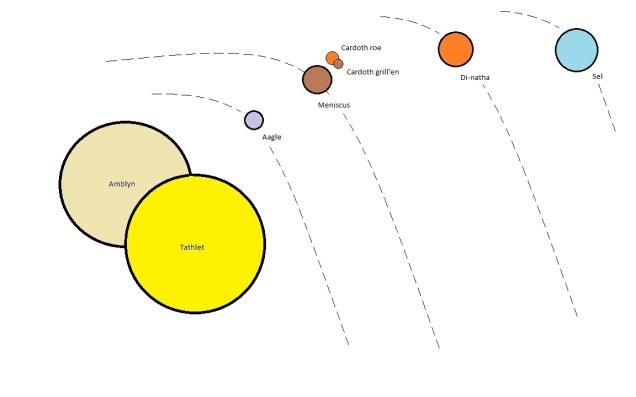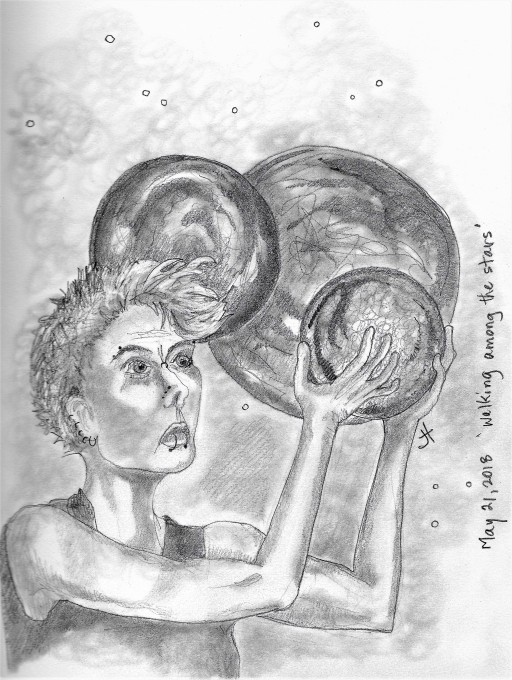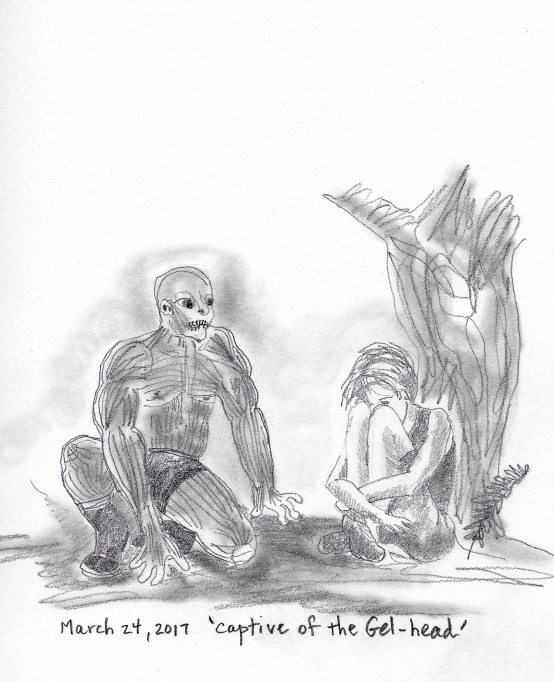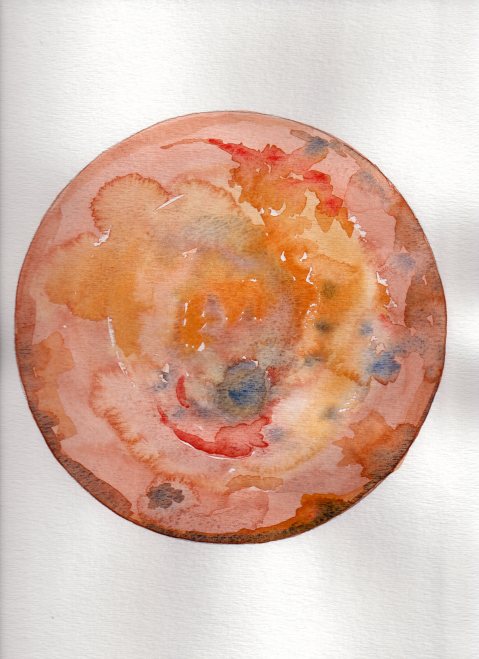Meniscus? Isn’t that something to do with knees?
~
Perhaps it was inexperience, perhaps a streak of author-stubborn. But when I started my science-fiction series, the name of the planet was, had to be, Meniscus. I probably should have paid attention when Amazon, pairing my key words with advertisers, chose to link my books with books about knee surgery.
~

~
The names of far-off worlds (real or fictional) are always a little strange. Keep in mind that planet names may be many:
- the name of the planet according to those who live there [for example, peoples of Terra call the planet Earth (English), Gaia (ancient Greek), Tellus (Latin), Bumi (Indonesian), Erd (German), Maa (Finnish), Suravani (Sanscrit) and so on].
- the names assigned to the planet by those in other solar systems and galaxies [perhaps the little green folk out there refer to Earth as Marble, Cloud-dance, Roil, or ²¯°±¥’%’].
~
As of June 2018, there are 2,841 stars known to have planets (known as exoplanets). There is a naming convention for exoplanets, adopted by the International Astronomical Union https://en.wikipedia.org/wiki/Exoplanet_naming_convention. Following the rules gives exoplanets names like HD 10180 j and PSR B1620-26 b. Proper names have also been assigned to some exoplanets, including Arkas, Dagon, Orbitar, Poltergeist and Spe.
~

~
So why did I choose the name Meniscus for the planet in my science-fiction series?
There are three main definitions of the noun ‘meniscus‘:
ANATOMY
a thin fibrous cartilage between the surfaces of some joints, e.g., the knee.PHYSICS
the curved upper surface of a liquid in a tube.OPTICS
a lens that is convex on one side and concave on the other.
~
I chose the name of the planet because, in some way, each definition of meniscus addresses a liminal space or a boundary where transition occurs. This liminal surface (a meniscus) separates bone from bone, or water from air, or changes the way light is bent as it moves from air to glass. In each case two surfaces collide at the meniscus and change is the result.
~
The word meniscus can also be a metaphor for two world-views colliding – the Human world with the Dock-winder world. Human ideas about freedom and equality are in direct conflict with Dock-winder dedication to superiority and servitude. Change (escaping servitude and building a life of freedom and equality) is at the centre of every Meniscus story.
~

~
Trivia about the name Meniscus as applied to my science fiction series:
- Water does not behave on the planet Meniscus. As a result of certain chemical and physical properties, it falls up rather than down. In a container of water on the planet, there is no formation of a meniscus.
- Odymn, the heroine of the story, is a practitioner of parcour, sometimes called free-running. Her ability to move quickly and quietly through the Themble Wood is critical to her freedom. What happens to freedom (spoiler alert) when she breaks her leg (Meniscus: The Village at Themble Hill) and, on top of this, dislocates a knee? You can find out in the next book in the series Meniscus: Karst Topography, coming in September.
- The Dock-winders, who actually named Meniscus, named it for the word in Gel-speak meaning ‘unruly water’.
~

~
Eventually all of the known planets in the real world may have names. Perhaps someday there will be a real planet Meniscus.
~
For a list of names of planets (named or unnamed) in real-life or science-fiction, see https://en.wikipedia.org/wiki/Lists_of_planets
~
All my best,
Alexandra

My problem isn’t so much naming planets as choosing them from existing exoplanets (as much as we know about them currently). So many “Earth-like” planets aren’t all that Earth-like, being ridiculously massive or too hot or cold, even though liquid water could potentially exist there. I often have to either tweak the planet’s characteristics or alter human beings in order to make colonization possible. Thanks, by the way, for the insight into Amazon’s algorithms. I’ll be careful when I’m ready to publish.
LikeLiked by 1 person
For convenience I imagine a planet not too different from Earth and populate it with ecosystems with an Earth feel. So much fun writing sci-fi, but life forms on Earth are so peculiar it’s hard to find something weirder that will work.
LikeLike
Just read your ‘Other Side of the Fence’. Engaging story and could happen. Seems people are always trying to separate from one another (not so much now but in Canada we have movements to separate on the basis of culture and language). Looking forward to reading your sci-fi novel.
LikeLike